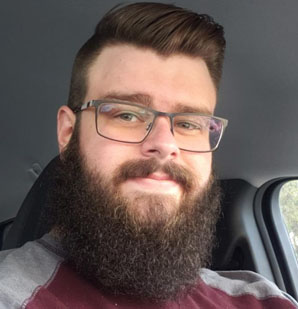UNT undergraduate student Travis Roberts influenced by the ONR STEM grant through the NT-NSC Program

Directly out of high school I worked in the electronics industry for a number of years as a corporate level manager. I grew tired of the traditional business-work but really enjoyed when I was able to speak to subject matter experts and engineers. That, combined with my hobbies in electronics, 3D printing, programming, and general 'maker-faire'/DIY attitude naturally led me to STEM, specifically electrical engineering. I quit my corporate job and started school at a local community college taking core classes - eventually working through my degree I found myself at UNT as an engineering student. In my electromagnetics course I was presented with an opportunity to join Dr. Mahbub in her ONR-Sponsored iBioCASL lab working on biomedical circuits and systems - and I took it. Working as a research assistant in Dr. Mahbub's iBioCASL lab helped prepare me for industry in a myriad of ways. Not only did I learn how to better work as a part of a collaborative engineering team I also learned first-hand how the engineering design process works through the design and implementation of new projects - taking ideas from theory to functional prototype. Learning more about RF than was necessarily taught in academia is part of what propelled me into my current industry position at Motorola Solutions. I am a systems engineer co-op for MSI designing RF systems for public safety and municipal clients in Texas and Oklahoma while I finish my B.S.E.E., and if it weren't for what I learned through the ONR via the iBioCASL lab I don't know that I would have been able to land this position.